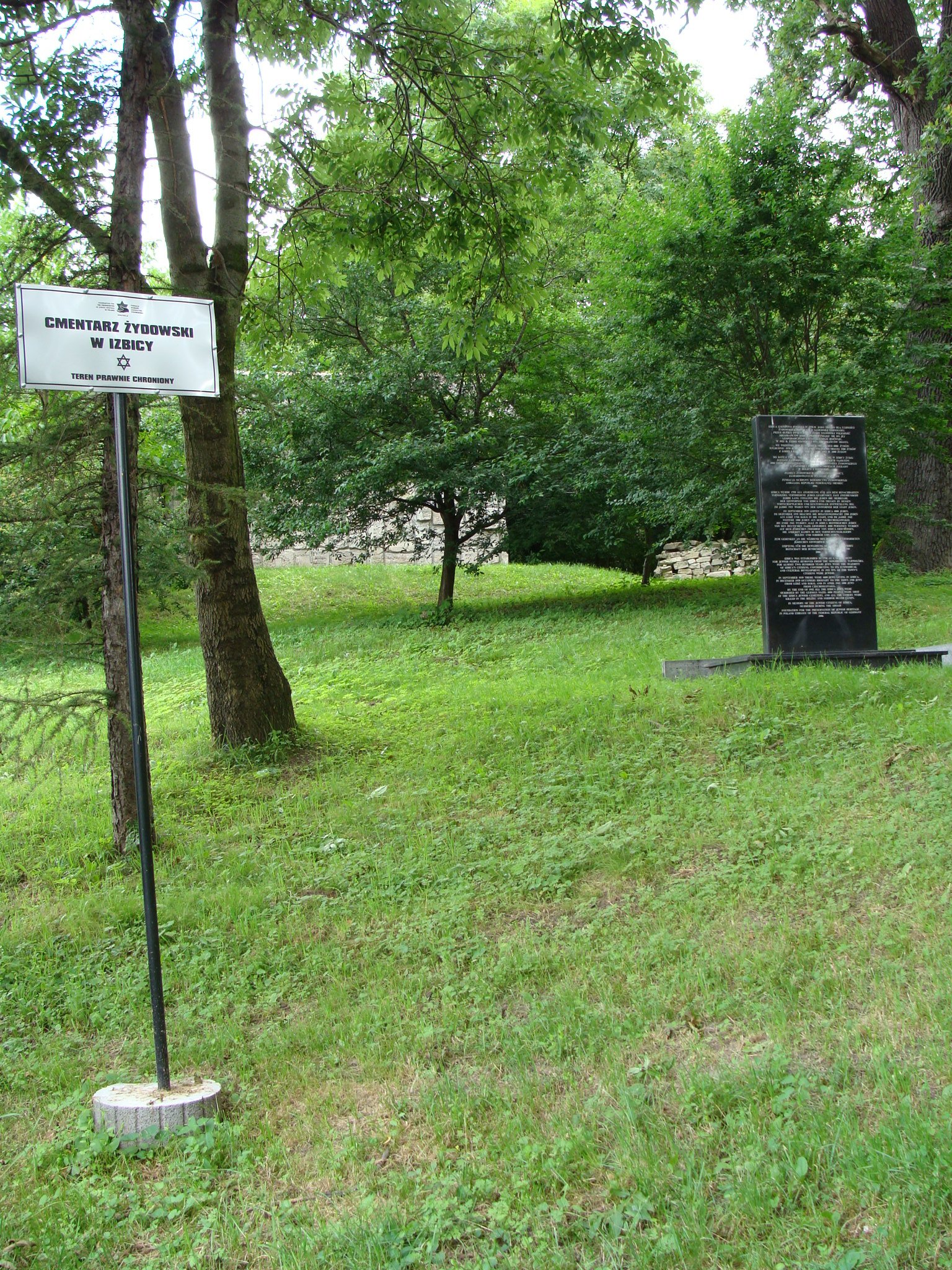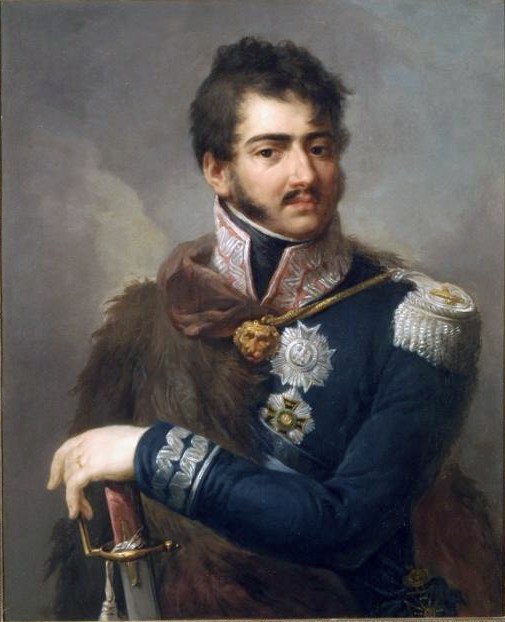|
Izbica
Izbica ( yi, איזשביצע ''Izhbitz, Izhbitze'') is a village in the Krasnystaw County of the Lublin Voivodeship in eastern Poland. It is the seat of the gmina administrative district called Gmina Izbica. It lies approximately south of Krasnystaw and south-east of the regional capital Lublin. It has a population of 1,933. History First mentioned in a church document from 1419, Izbica became a town in 1750, granted location privileges by Augustus III of Poland including the right of a Jewish settlement. Previously, the unconcluded city rights were issued in 1540 to Hetman Jan Tarnowski, who gave them back to the crown. In 1662 some 23 Catholics lived there. In 1744 the Jews of Tarnogóra were brought to Izbica by Antoni Granowski who secured the town privileges for them independently of the preexisting old settlement. A notable centre of trade and commerce, with time the town became a shtetl inhabited almost entirely by Polish Jews. In 1760 the city charter was reaffirmed ... [...More Info...] [...Related Items...] OR: [Wikipedia] [Google] [Baidu] |
Gmina Izbica
__NOTOC__ Gmina Izbica is a rural gmina (administrative district) in Krasnystaw County, Lublin Voivodeship, in eastern Poland. Its seat is the village of Izbica, which lies approximately south of Krasnystaw and south-east of the regional capital Lublin. The gmina covers an area of , and as of 2006 its total population is 8,942. The gmina contains part of the protected area called Skierbieszów Landscape Park. Villages Gmina Izbica contains the villages and settlements of Bobliwo, Dworzyska, Lublin Voivodeship, Dworzyska, Izbica, Kryniczki, Majdan Krynicki, Krasnystaw County, Majdan Krynicki, Mchy, Lublin Voivodeship, Mchy, Orłów Drewniany, Orłów Drewniany-Kolonia, Orłów Murowany, Orłów Murowany-Kolonia, Ostrówek, Krasnystaw County, Ostrówek, Ostrzyca, Lublin Voivodeship, Ostrzyca, Romanów, Krasnystaw County, Romanów, Stryjów, Tarnogóra, Lublin Voivodeship, Tarnogóra, Tarnogóra-Kolonia, Tarzymiechy Drugie, Tarzymiechy Pierwsze, Tarzymiechy Trzecie, Topola, Lublin ... [...More Info...] [...Related Items...] OR: [Wikipedia] [Google] [Baidu] |
Mordechai Yosef Leiner
Mordechai Yosef Leiner of Izbica (מרדכי יוסף ליינר) known as "the Ishbitzer" ( yi, איזשביצע, איזביצע ''Izhbitze, Izbitse, Ishbitze'') (1801-1854The State Archive of Lublin "Jewish Civil Registry of Izbica Lubelski", 1854, Akt#: 6, Registration Type: death, Registration Year: 1854, Location: Izbica Lubelski, Surname: Lajner, Given Name: Mordko. Indexed by .) was a nic Hasidic thinker and founder of the Izhbitza-Radzyn dynasty of |
Krasnystaw County
__NOTOC__ Krasnystaw County ( pl, powiat krasnostawski) is a unit of territorial administration and local government (powiat) in Lublin Voivodeship, eastern Poland. It was established on January 1, 1999, as a result of the Polish local government reforms passed in 1998. Its administrative seat and only town is Krasnystaw, which lies south-east of the regional capital Lublin. The county covers an area of . As of 2019, its total population is 63,554, out of which the population of Krasnystaw is 18,675 and the rural population is 44,879. Neighbouring counties Krasnystaw County is bordered by Chełm County to the north-east, Zamość County and Biłgoraj County to the south, Lublin County to the west, and Świdnik County to the north-west. Administrative division The county is subdivided into 10 gminas (one urban and nine rural). These are listed in the following table, in descending order of population. (Until 2006 the county also included Gmina Rejowiec, which is now in Chełm Cou ... [...More Info...] [...Related Items...] OR: [Wikipedia] [Google] [Baidu] |
Lublin Voivodeship
The Lublin Voivodeship, also known as the Lublin Province (Polish: ''województwo lubelskie'' ), is a voivodeship (province) of Poland, located in southeastern part of the country. It was created on January 1, 1999, out of the former Lublin, Chełm, Zamość, Biała Podlaska and (partially) Tarnobrzeg and Siedlce Voivodeships, pursuant to Polish local government reforms adopted in 1998. The region is named after its largest city and regional capital, Lublin, and its territory is made of four historical lands: the western part of the voivodeship, with Lublin itself, belongs to Lesser Poland, the eastern part of Lublin Area belongs to Red Ruthenia, and the northeast belongs to Polesie and Podlasie. Lublin Voivodeship borders Subcarpathian Voivodeship to the south, Świętokrzyskie Voivodeship to the south-west, Masovian Voivodeship to the west and north, Podlaskie Voivodeship along a short boundary to the north, Belarus (Brest Region) and Ukraine (Lviv Oblast and Volyn Oblasts) to ... [...More Info...] [...Related Items...] OR: [Wikipedia] [Google] [Baidu] |
Hasidic Judaism
Hasidism, sometimes spelled Chassidism, and also known as Hasidic Judaism (Ashkenazi Hebrew: חסידות ''Ḥăsīdus'', ; originally, "piety"), is a Judaism, Jewish religious group that arose as a spiritual revival movement in the territory of contemporary Western Ukraine during the 18th century, and spread rapidly throughout Eastern Europe. Today, most affiliates reside in Israel and the United States. Israel Ben Eliezer, the "Baal Shem Tov", is regarded as its founding father, and his disciples developed and disseminated it. Present-day Hasidism is a sub-group within Haredi Judaism and is noted for its religious conservatism and social seclusion. Its members adhere closely both to Orthodox Judaism, Orthodox Jewish practice – with the movement's own unique emphases – and the traditions of Eastern European Jews. Many of the latter, including various special styles of dress and the use of the Yiddish language, are nowadays associated almost exclusively with Hasidism. Hasi ... [...More Info...] [...Related Items...] OR: [Wikipedia] [Google] [Baidu] |
Izhbitza – Radzin (Hasidic Dynasty)
Izhbitza-Radzin is the name of a List of Hasidic dynasties, dynasty of Hasidic Judaism, Hasidic rebbes. The first rebbe of this dynasty was Rabbi Mordechai Yosef Leiner, author of ''Mei Hashiloach'', in the city of Izhbitza. (Izhbitza is the Yiddish language, Yiddish name of Izbica, located in present-day Poland.) Mordechai Yosef founded his own Hasidic movement in the year 5600 (1839), leaving the court of Rabbi Menachem Mendel of Kotzk. His son and successor, Rabbi Yaakov Leiner of Izhbitza, moved to Radzyń Podlaski, Radzin. The dynasty today is therefore known more as the "Radziner Dynasty". The third Rebbe#Hasidic Rebbe, Rebbe, Rabbi Gershon Henoch Leiner of Radzin, re-instituted the use of a version of Tekhelet, techeiles of the Tzitzit, tzitzis. The better known works of the Izhbitzer-Radziner Rebbeim are Mei Hashiloach, Beis Yaakov, Sod Yesharim, and Tiferes Yosef. Today, the largest center of Radziner Hasidim is found in Bnei Brak, Israel, under the leadership of Rabb ... [...More Info...] [...Related Items...] OR: [Wikipedia] [Google] [Baidu] |
Duchy Of Warsaw
The Duchy of Warsaw ( pl, Księstwo Warszawskie, french: Duché de Varsovie, german: Herzogtum Warschau), also known as the Grand Duchy of Warsaw and Napoleonic Poland, was a French client state established by Napoleon Bonaparte in 1807, during the Napoleonic Wars. It comprised the ethnically Polish lands ceded to France by Prussia under the terms of the Treaties of Tilsit. It was the first attempt to re-establish Poland as a sovereign state after the 18th-century partitions and covered the central and southeastern parts of present-day Poland. The duchy was held in personal union by Napoleon's ally, Frederick Augustus I of Saxony, who became the Grand Duke of Warsaw and remained a legitimate candidate for the Polish throne. Following Napoleon's failed invasion of Russia, the duchy was occupied by Prussian and Russian troops until 1815, when it was formally divided between the two countries at the Congress of Vienna. The east-central territory of the duchy acquired by the Russia ... [...More Info...] [...Related Items...] OR: [Wikipedia] [Google] [Baidu] |
Napoleon Bonaparte
Napoleon Bonaparte ; it, Napoleone Bonaparte, ; co, Napulione Buonaparte. (born Napoleone Buonaparte; 15 August 1769 – 5 May 1821), later known by his regnal name Napoleon I, was a French military commander and political leader who rose to prominence during the French Revolution and led Military career of Napoleon Bonaparte, successful campaigns during the French Revolutionary Wars, Revolutionary Wars. He was the ''de facto'' leader of the First French Republic, French Republic as First Consul from 1799 to 1804, then Emperor of the French from 1804 until 1814 and again in Hundred Days, 1815. Napoleon's political and cultural legacy endures to this day, as a highly celebrated and controversial leader. He initiated many liberal reforms that have persisted in society, and is considered one of the greatest military commanders in history. His wars and campaigns are studied by militaries all over the world. Between three and six million civilians and soldiers Napoleonic Wa ... [...More Info...] [...Related Items...] OR: [Wikipedia] [Google] [Baidu] |
Congress Of Vienna
The Congress of Vienna (, ) of 1814–1815 was a series of international diplomatic meetings to discuss and agree upon a possible new layout of the European political and constitutional order after the downfall of the French Emperor Napoleon Bonaparte. Participants were representatives of all European powers and other stakeholders, chaired by Austrian statesman Klemens von Metternich, and held in Vienna from September 1814 to June 1815. The objective of the Congress was to provide a long-term peace plan for Europe by settling critical issues arising from the French Revolutionary Wars and the Napoleonic Wars without the use of (military) violence. The goal was not simply to restore old boundaries, but to resize the main powers so they could balance each other and remain at peace, being at the same time shepherds for the smaller powers. More fundamentally, strongly generalising, conservative thinking leaders like Von Metternich also sought to restrain or eliminate republicanism, ... [...More Info...] [...Related Items...] OR: [Wikipedia] [Google] [Baidu] |
Congress Poland
Congress Poland, Congress Kingdom of Poland, or Russian Poland, formally known as the Kingdom of Poland, was a polity created in 1815 by the Congress of Vienna as a semi-autonomous Polish state, a successor to Napoleon's Duchy of Warsaw. It was established when the French ceded a part of Polish territory to the Russian Empire following France's defeat in the Napoleonic Wars. In 1915, during World War I, it was replaced by the German-controlled nominal Regency Kingdom until Poland regained independence in 1918. Following the partitions of Poland at the end of the 18th century, Poland ceased to exist as an independent nation for 123 years. The territory, with its native population, was split between the Habsburg monarchy, the Kingdom of Prussia, and the Russian Empire. After 1804, an equivalent to Congress Poland within the Austrian Empire was the Kingdom of Galicia and Lodomeria, also commonly referred to as "Austrian Poland". The area incorporated into Prussia and subse ... [...More Info...] [...Related Items...] OR: [Wikipedia] [Google] [Baidu] |
Tenements
A tenement is a type of building shared by multiple dwellings, typically with flats or apartments on each floor and with shared entrance stairway access. They are common on the British Isles, particularly in Scotland. In the medieval Old Town, in Edinburgh, tenements were developed with each apartment treated as a separate house, built on top of each other (such as Gladstone's Land). Over hundreds of years, custom grew to become law concerning maintenance and repairs, as first formally discussed in Stair's 1681 writings on Scots property law. In Scotland, these are now governed by the Tenements Act, which replaced the old Law of the Tenement and created a new system of common ownership and procedures concerning repairs and maintenance of tenements. Tenements with one or two room flats provided popular rented accommodation for workers, but in some inner-city areas, overcrowding and maintenance problems led to shanty towns, which have been cleared and redeveloped. In more affluen ... [...More Info...] [...Related Items...] OR: [Wikipedia] [Google] [Baidu] |
Tzadik
Tzadik ( he, צַדִּיק , "righteous ne, also ''zadik'', ''ṣaddîq'' or ''sadiq''; pl. ''tzadikim'' ''ṣadiqim'') is a title in Judaism given to people considered righteous, such as biblical figures and later spiritual masters. The root of the word ''ṣadiq'', is '' ṣ- d- q'' ( ''tsedek''), which means "justice" or "righteousness". When applied to a righteous woman, the term is inflected as ''tzadika/tzaddikot''. ''Tzadik'' is also the root of the word ''tzedakah'' ('charity', literally 'righteousness'). The term ''tzadik'' "righteous", and its associated meanings, developed in rabbinic thought from its Talmudic contrast with ''hasid'' ("pious" honorific), to its exploration in ethical literature, and its esoteric spiritualisation in Kabbalah. Since the late 17th century, in Hasidic Judaism, the institution of the mystical tzadik as a divine channel assumed central importance, combining popularization of (hands-on) Jewish mysticism with social movement for th ... [...More Info...] [...Related Items...] OR: [Wikipedia] [Google] [Baidu] |







